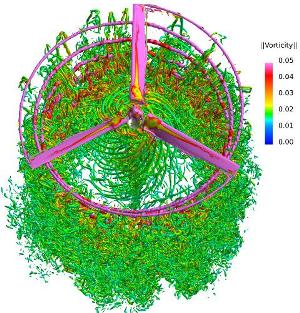The new release, three years in the making, delivers fast visualization of analysis data, high compression ratios, and a new system of CFD data management.
Intelligent Light(IL) is now shipping an update to FieldView that it says delivers a “triple crown” of benefits to users of computational fluid dynamics (CFD) analysis products. Three years in the making, FieldView 13 offers improved graphics performance, higher image quality, and a new approach to CFD data management.

FieldView is used to process and visualize CFD data created by other programs, including FLOW-3D from Flow Science. The new version is backward compatible with previous versions.
Pre-release user Frieder Semler of CFD Consultants in Germany says, “We can now view animated transient filling sequences, and at the same time rotate, move, and zoom to gain new insights. The data management tools typically reduce file sizes by a factor of 50 and allow batch and interactive work on the same machine, making FLOW-3D work much easier.”
FieldView 13 exploits modern multi-core CPU and many-core GPU systems. The new graphics provide faster interactivity on systems of all configurations. Intelligent Light claims uses can expect a 2X to 40X speed increase on their existing graphics hardware, depending on graphics resources and data. The software has been updated to provide 3D rendering acceleration and multi-threading for interactive performance, plus software rendering for batch processing on high-performance computing systems. Image quality is enhanced with anti-aliasing, transparency, and high quality type fonts.
Data associated with CFD is large and complex. FieldView 13 lets users create compact representations of their datasets, known as XDB files, that IL says are nearly 50X smaller than the original data yet maintain the full numerical fidelity of their much larger complete datasets. That means faster interaction, easier collaboration, faster queries and calculations, smaller files, and lower disk requirements.
The accompanying image shows a high-resolution CFD simulation of V-22 Osprey rotor wake. The original simulation was post-processed with FieldView 13 on a dual-CPU 8-core workstation. This multi-grid Overflow simulation contains 14,000 grids and 668 million grid points.





